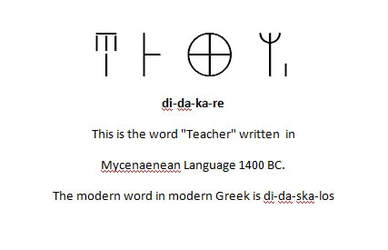



Modern Greek developed from Koine Greek which is spoken today.Medieval (Byzantine) Greek was the literary language of the Byzantine Empire that was used until its fall in the 15th century AD.Koine ‘common’ Greek, a fusion of of various Greek dialects with the dialect of Athens, was a common Greek dialect that became one of the world’s first lingua francas.Classical Greek fell into disuse in western Europe in the Middle Ages, but remained known in the Byzantine Empire, and was reintroduced to the rest of Europe with the Fall of Constantinople and Greek migration to Italy. Classical (or Ancient) Greek, known throughout the Roman empire, was the language of the Classical period of Greek civilization.Mycenaean Greek, was the language of the Mycenaean civilization (16th century BC onward).The history of the Greek language is usually divided into several periods characterized by political and linguistic factors: Modern Greek is a descendant of Proto-Greek, the ancestor of the ancient Greek dialects that were spoken in different areas of Greece before the 4th century BC and which were gradually replaced by a variety of Greek called Common Greek or Koine (κοινή) based on the Attic dialect spoken around Athens. They were written in the Linear B syllabary. It has been spoken in the southern Balkans since the early part of the second millennium BC and has a documented history that goes back 3,500 years, the longest record of an Indo-European language.The earliest written evidence of Greek are Mycenaean Greek documents found on Crete and later on the Greek mainland.

Of all the living Indo-European languages, it is most closely related to Armenian. Greek (Eλληνικά), the language of one of the major civilizations and one of the greatest literatures of the world, forms its own independent branch of the Indo-European language family and has no close living relatives.


 0 kommentar(er)
0 kommentar(er)
